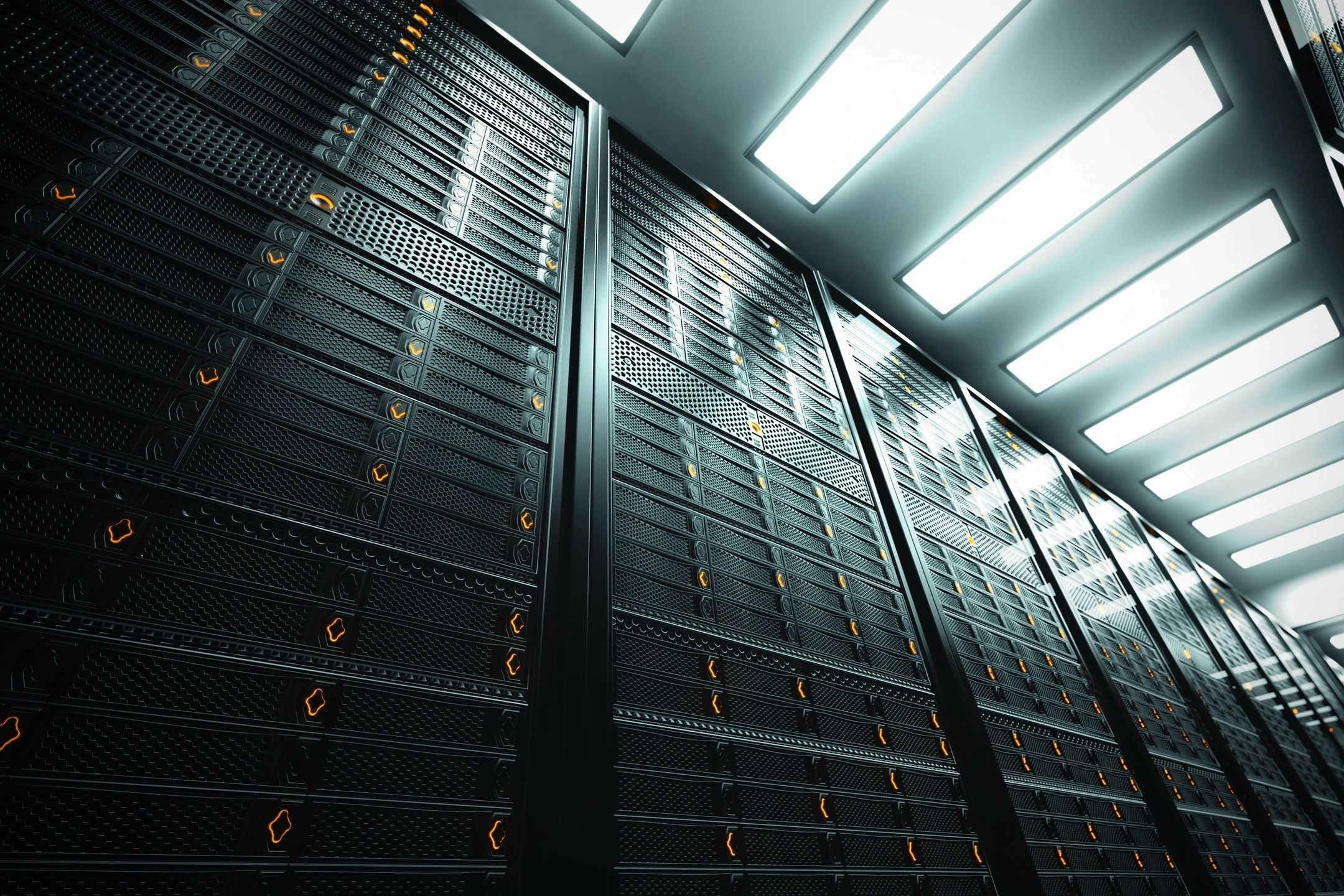In the fast-paced digital landscape, data storage has emerged as a critical aspect of modern business operations. As a business owner or manager, it’s essential to grasp the concept of data storage to effectively manage and protect your organization’s digital information. In this comprehensive guide, we will demystify the world of data storage, shedding light on its definition, significance, and various storage options available. By the end of this article, you’ll have a solid understanding of data storage fundamentals, empowering you to make informed decisions about your company’s data management strategy.
What is Data Storage?
Data storage is the process of converting digital information into bytes and storing them using various technologies such as hard disk drives (HDDs), solid-state drives (SSDs), or cloud storage. These storage mediums organize and manage data using file systems, which track the location and metadata of files. When accessing stored data, computers use file systems to retrieve the specific bytes and transfer them to memory for processing. Understanding how data storage works is crucial for effectively managing and utilizing digital information in today’s data-driven business environment.
How Does Data Storage Work?
Data storage works through a series of steps and components that enable the storage and retrieval of digital information. Here is a list outlining the key aspects of how data storage works:
- Data Conversion: Digital information is converted into bytes, which are composed of binary digits (0s and 1s), representing characters, numbers, or symbols.
- Storage Technologies: Various storage technologies are used, including:
- Hard Disk Drives (HDDs): Data is stored on spinning magnetic disks, and a read/write head accesses specific locations to retrieve or store data.
- Solid-State Drives (SSDs): Data is stored in flash memory cells, allowing for faster and more reliable access compared to HDDs.
- Cloud Storage: Data is stored on remote servers accessed via the internet, providing scalability, accessibility, and automatic backups.
- File Systems: Data is organized and managed using file systems, which track the location, metadata, and organization of files on the storage medium. File systems enable efficient retrieval and modification of data.
- Data Access: To access stored data, computers use file systems to locate the specific file and retrieve the corresponding bytes. This involves reading the storage medium, transferring the data to the computer’s memory, and making it available for processing by software applications.
- Data Management: Effective data storage involves managing data through practices such as data backup, encryption, and data lifecycle management. This ensures data integrity, availability, and protection against loss or corruption.
- Retrieval and Processing: Once data is accessed and transferred to memory, it can be processed by software applications, enabling analysis, manipulation, and utilization of the stored information.
Understanding how data storage works is essential for businesses to effectively manage and utilize their digital information, ensuring its availability, integrity, and security.
Why is Data Storage Important?
Data storage is of paramount importance in today’s digital landscape for several reasons. Firstly, it enables businesses to effectively manage and organize their vast amounts of digital information, ensuring easy access and retrieval when needed. Proper data storage practices also contribute to data integrity, safeguarding against data loss or corruption. Additionally, data storage plays a crucial role in data backup and disaster recovery, protecting businesses from potential hardware failures, cyberattacks, or natural disasters. Moreover, efficient data storage allows for data analysis and insights, enabling businesses to make informed decisions and gain a competitive edge. Overall, data storage is essential for efficient data management, security, and leveraging the power of data for business growth and success.
What are the Difference Types of Data Storage?
Hard Disk Drives (HDDs)
- HDDs use spinning magnetic disks to store data.
- They offer high storage capacity at a relatively lower cost.
- However, they are slower in terms of data access compared to other storage types.
Solid-State Drives (SSDs)
- SSDs use flash memory to store data.
- They provide faster data access and transfer speeds.
- SSDs are more durable and resistant to physical damage due to their lack of moving parts.
- However, they are generally more expensive than HDDs for the same storage capacity.
Cloud Storage
- Storage systems such as cloud storage involve storing data on remote servers accessed via the internet.
- It offers scalability, allowing businesses to easily expand their storage capacity as needed.
- Cloud storage provides accessibility from anywhere with an internet connection.
- It often includes features like automatic backups and data redundancy for enhanced data protection.
Network-Attached Storage (NAS)
- NAS is a dedicated storage device connected to a network.
- It allows multiple users to access and share data simultaneously.
- NAS devices are often used for centralized data storage and backup in small to medium-sized businesses.
Optical Storage
- Optical storage uses lasers to read and write data on optical discs like CDs, DVDs, and Blu-ray discs.
- It provides a portable and long-lasting storage solution for smaller amounts of data.
Understanding the different types of data storage options available allows businesses to choose the most suitable solution based on factors such as cost, performance, scalability, and data accessibility requirements.
How Does Data Storage Relate to Cybersecurity?
Data storage and cybersecurity are closely intertwined in today’s digital landscape. Effective data storage practices are essential for maintaining the security and integrity of digital information. Secure data storage involves implementing encryption techniques to protect sensitive data from unauthorized access. Additionally, data storage systems should have robust access controls and authentication mechanisms to ensure that only authorized individuals can access and modify the stored data. Regular backups and disaster recovery plans are also crucial components of data storage-related cybersecurity, as they help mitigate the impact of data breaches or system failures. By implementing strong data storage practices, businesses can enhance their cybersecurity posture and protect their valuable digital assets from potential threats.
What Kind of Media and Records Can Be Stored?
A wide range of media and records can be stored digitally, offering convenience, accessibility, and efficient management. Here are some examples of the types of media and records that can be recorded digitally:
- Documents and Files:
- Text documents (e.g., Word documents, PDFs)
- Spreadsheets (e.g., Excel files)
- Presentations (e.g., PowerPoint slides)
- Images (e.g., JPEG, PNG, GIF)
- Videos (e.g., MP4, AVI, MOV)
- Audio files (e.g., MP3, WAV)
- Databases:
- Structured data stored in database management systems (DBMS)
- Customer information
- Product catalogs
- Inventory records
- Financial data
- Emails and Communication Records:
- Email messages and attachments
- Chat logs and instant messaging conversations
- Voicemail recordings
- Website and Online Content:
- Web pages and website content
- Blogs and articles
- Multimedia content (images, videos, audio)
- Social Media Data:
- Social media posts and comments
- User profiles and account information
- Media shared on social platforms
- Financial Records:
- Invoices and receipts
- Financial statements
- Transaction records
- Tax documents
- Personal and Professional Records:
- Personal documents (e.g., resumes, certificates)
- Employee records (e.g., contracts, performance reviews)
- Legal documents (e.g., contracts, agreements)
By storing these media and records digitally, businesses can benefit from easy access, efficient search and retrieval, reduced physical storage space, and improved data security. Digital storage also enables data backup and disaster recovery measures to protect against data loss or damage.
What are the Challenges or Risks Associated with Data Storage?
Data storage presents various challenges and risks that organizations need to address to ensure the security and integrity of their digital information. One significant challenge is the risk of mechanical failures in storage devices. Hard disk drives (HDDs), for example, consist of spinning platters and moving read/write heads, making them susceptible to mechanical issues that can lead to data loss or corruption.
Solid-state drives (SSDs) are generally more reliable due to their lack of moving parts, but they can still experience wear and tear over time. To mitigate these risks, organizations should regularly monitor the health of storage devices, implement redundancy measures such as RAID (Redundant Array of Independent Disks), and maintain proper backup and recovery strategies.
Another challenge is the long-term preservation of data. Digital information needs to be stored and preserved for extended periods, often spanning years or even decades. However, storage technologies and file formats can become obsolete over time, making it difficult to access and retrieve data in the future.
Conclusion
In conclusion, data storage is a fundamental aspect of managing digital information in today’s business landscape. Understanding the basics of data storage is crucial for business owners and managers to make informed decisions about data management and security. By implementing effective data storage practices, businesses can ensure the availability, integrity, and security of their valuable digital assets. Whether it’s utilizing technologies like hard disk drives (HDDs) or solid-state drives (SSDs), leveraging cloud storage solutions, or implementing proper data backup and disaster recovery strategies, businesses can optimize their data storage practices to drive operational efficiency and protect against potential risks. By staying informed about the latest advancements in data storage and adopting best practices, organizations can confidently navigate the ever-evolving digital world and harness the power of data for their success.
Final Thoughts
Elevate your cybersecurity defenses with Buzz Cybersecurity, the industry leader in comprehensive security solutions. Our extensive portfolio of services, including managed IT services, cloud solutions, disaster recovery, and ransomware protection, is meticulously designed to cater to the diverse demands of businesses. With our unwavering dedication to excellence, we ensure that your business remains shielded from the ever-evolving cyber landscape. Join the ranks of businesses across neighboring states who entrust Buzz Cybersecurity with their security requirements and unlock unparalleled protection.
Sources
- https://www.ibm.com/topics/data-lifecycle-management
- https://online.hbs.edu/blog/post/what-is-data-integrity
- https://www.avast.com/c-what-is-ssd
- https://aws.amazon.com/what-is/nas/
- https://tsl.access.preservica.com/tslac-digital-preservation-framework/best-practices-for-long-term-preservation/
Photo by IndianSumm on Freeimages.com



